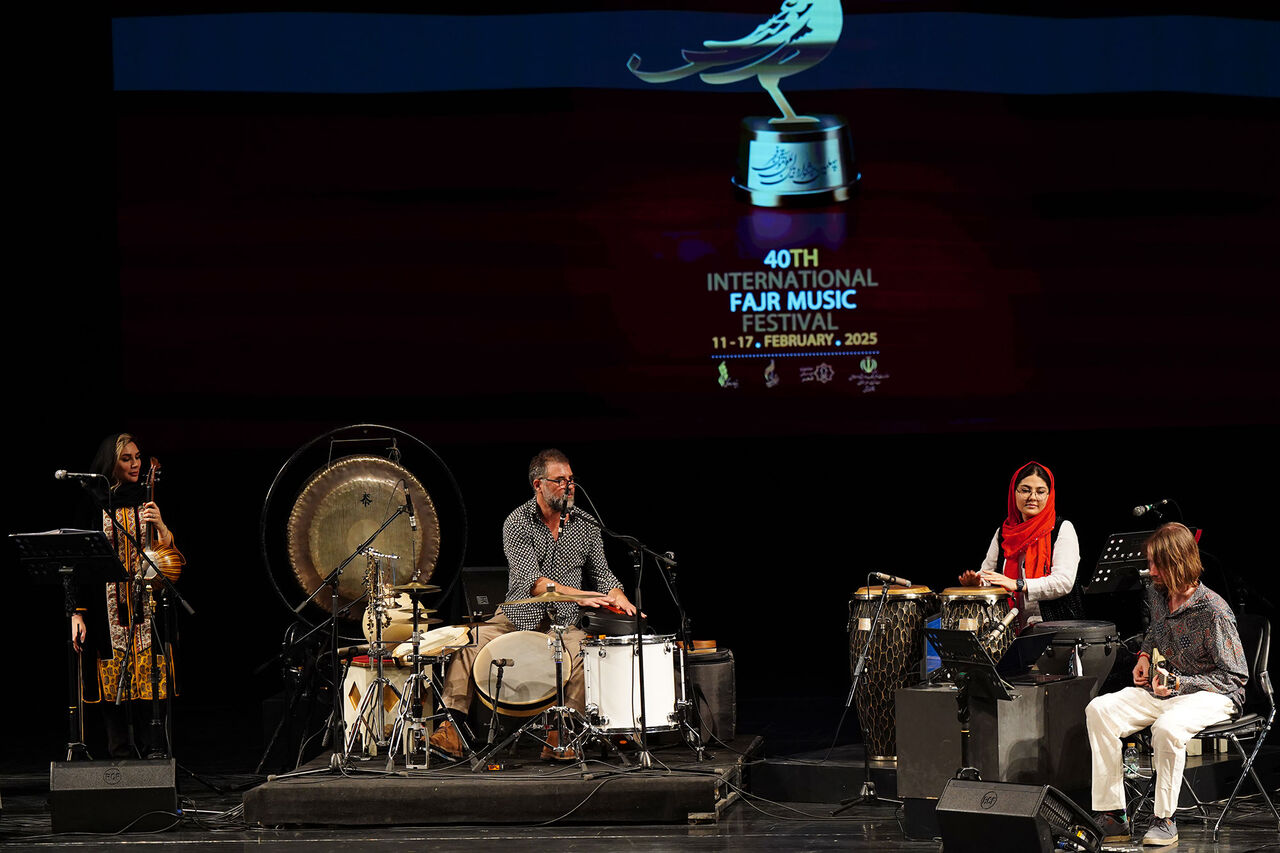
The musical exchange between Iran and the Netherlands on the fifth night of the 40th Fajr Music Festival created a novel and blended experience for the audience. The performance featured Eastern melodies alongside the creative use of sound effects and the gradual cohesion of the ensemble, which stood out as highlights of the evening. This experience not only reflected the connection between Eastern and Western music but also emphasized the importance of supporting female musicians and the impact of such support on contemporary music trends.
On the fifth night of the 40th Fajr Music Festival, Vahdat Hall at 21:30 hosted a joint concert between Iran and the Netherlands. Three international musicians took part in the performance: Sahin During, a percussionist from the Netherlands; Bram Stadhouders, a guitarist from the Netherlands; and Bence Huszar, a cellist from Hungary.
Later in the concert, the ensemble “Nousha,” comprised of Iranian women musicians and led by Niusha Barimani, joined these three international performers on stage.
At the start of the concert, the three non-Iranian musicians took the stage and established an Eastern atmosphere in their performance. The electric guitar, with pad-like sounds, helped shape the ambiance, while the percussion instruments added an attractive dimension through their effect-driven and sonically colorful playing. Meanwhile, the cello took a central role, carrying the main melodies. This combination created an experimental and distinctive performance, offering the audience a sonically rich and creative musical experience.
One of the innovative and noteworthy aspects of this performance was the use of an electric cello connected to a pedalboard. By playing harmonics and applying a delay (echo) effect to the cello’s sound line, the musician created an echoing atmosphere. This technique simulated the sound of birdsong reverberating through mountains, adding a unique and inspiring layer to the performance.
When the electric guitar played rhythmic riffs, it brought a more European feel to the music. These rhythmic patterns contributed a modern and diverse texture, which, when combined with the other instruments, presented a fusion of Eastern and Western musical elements.
After performing several pieces, Sahin During briefly addressed the audience. He noted that this was the first time all three musicians were performing together and introduced the group members to the audience. During also mentioned that this was his third trip to Iran and expressed his fondness for Iranian culture and language while speaking about his experience in the country.
He then introduced Niusha Barimani and invited her to the stage. He explained that he had known Barimani for 12 years, beginning with her trip to the Netherlands. During also mentioned that his first visit to Iran had been six years ago, at Barimani’s invitation, and expressed hope that such collaborations would continue in the future.
Following this, Niusha Barimani entered the stage with her kamancheh, accompanied by the percussionist of the Nousha group, and performed several pieces with the three international musicians. In this section, the main melodic line was carried by Barimani’s kamancheh, which, in harmony with the other instruments, created a novel and blended musical atmosphere.
After a few more pieces, the rest of the Nousha ensemble—all Iranian women musicians—joined the stage. This part of the performance featured players on oud, flute, bass, piano, and band instruments.
Initially, the group appeared slightly out of sync, but gradually found its cohesion, and the coordination among the musicians improved. Overall, the flute performance could have been more rhythmically precise, but it still contributed to the performance’s tonal variety alongside the other instruments.
Niusha Barimani’s kamancheh performance was clean, melodious, and musically expressive. The Iranian melodies she played were familiar and appealing to the audience and effectively conveyed the spirit of Iranian music.
Blending this atmosphere with jazz and blues piano solos, along with the accompaniment of the Dutch guitarist, resulted in a fresh and different combination. This musical interaction produced a layered and fusion-rich soundscape that was rooted in Iranian traditional music while also infused with contemporary Western musical colors.
Overall, the performance created a memorable and captivating night. The prominent presence of women artists in the Nousha group and their collaboration with international musicians demonstrated that supporting female musicians and investing in their talents can lead to impactful and positive developments in the music scene.
Written By Farid Parish
